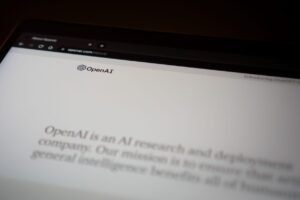“Digital development” – the last 100 metres
Tech-solutionism is fairly common in the development sector; we regularly hear that a new widget or (increasingly) the latest app is going to transform some aspect of service delivery or save innumerable hours of time. The same thinking has swamped much discussion on higher education (HE) in the last few years, an issue typified by recent talk about MOOCs. And, as the development sector looks increasingly at the role that higher education has to play in transforming societies and economies, the streams run together.
Of course technology plays and has played a vital role in development – in medicine or agriculture for example – and technology and online learning offer huge possibilities for HE. But sometimes it feels like we’re caught in our own hype.
Undoubtedly, better broadband connectivity, greater mobile penetration, more students with smartphones and laptops – these are all changing the possibilities for learning, and for the way universities function. But, technology alone won’t change learning.
If there’s one thing that our work continually reminds us, it’s that it’s the people (enabled, of course, by the right institutional environment) who make things happen. So without the skills to deploy technology, maintain and improve it – and to think critically and creatively about its use – it won’t suddenly transform the way teaching or research is done. Developing technology is about developing individuals to manage and mobilise it.
And for technology to deliver on its promises we need to take the discussion from high vision to practical implementation.
The day-to-day difficulties of online
I was reminded of this the other week in an online panel that the Guardian newspaper ran on how to improve higher education in Africa. Some familiar claims were made about the power of MOOCs to transform HE – without much thought about how that might happen.
I happened to be in Addis Ababa at the time, so I logged in from there. We were in a business hotel, with decent wifi and a pretty quick connection. But downloading emails, webpages and the odd document is very different from trying to participate in a live discussion. I found the page hanging, I had to log back in several times, and I nearly gave up in frustration at several points. Meanwhile discussion flowed about how online learning was a game-changer. Struggling with a patch connection, it didn’t feel especially convincing, not least when I reflected that my connection was probably a lot better than many universities enjoy.
At INASP we’re excited about what’s changing in research and HE, and the potential of technology to contribute to the revitalisation of research and teaching, but we also know that there are some pretty fundamental things that need to be in place for this digital promise to be realised. Rather than thinking “last mile” we’re often thinking “last 100 metres”.
INASP’s digital work
We’ve made significant investments over the years in projects that seek to bring the benefits of digital technology to developing-country research and HE. For over 20 years we’ve worked to bring online journal access to universities and research institutes. We established African Journals Online back in 1998 to provide a platform for African journals to publish – and gain visibility – online, and have since developed sister platforms in Vietnam, Bangladesh, Sri Lanka, Nepal, Mongolia and Central America. We’ve also pioneered online training for researchers in proposal writing and scientific publication, taking a low-bandwidth approach. Our online courses run on Moodle, designed for low-bandwidth connections rather than the video-rich experience of the global MOOCs, and many are facilitated from Mumbai, not Oxford.
We’ve provided training in managing bandwidth better, and in recent years have been working with NRENs (the national academic broadband consortia/networks) to help improve connectivity over the last few hundred metres on campus networks. Huge investments in submarine cables, and in terrestrial fibre have transformed internet access, but all too often this potential is lost through poorly configured local networks.
Thinking boldly, but remembering today’s realities
There are many reasons to be extremely positive about technology in African HE. In Addis, the Director General for HE described Ethiopia’s ambitious plan to transform universities through a new high-speed fibre optic network.
In Kenya, KENET, are one of the region’s leaders in the development of ICT-enabled services for universities. Our NREN partners in Uganda, Tanzania and Zambia are working to massively improve campus networks – delivering better connectivity to the desktop – as well as exploring a range of IT enabled services. But what these examples show is that for ambitious plans to be developed, there is a real need to invest in the basic infrastructure – and particularly at the level of individual universities.
It also shows how much skilled people matter. There is plenty of expertise in the region, but there are often too few engineers and experts to support a rapidly growing system.
So while we think boldly about the future, we also need to remember today’s realities – and probably those of tomorrow and next year – when many campuses will still have patchy connections and unreliable power supplies, and students won’t all have laptops and smartphones to consume the latest multimedia content.
INASP – and, more specifically, our partners – have a great deal of experience solving the day-to-day, last-100 metre problems of bringing digital possibilities to research. It’s this expertise that we’re really keen to bring to others who are thinking about how digital technology can strengthen research and HE.





Great post Jon! I’d like to add that I have facilitated INASP online courses not only from Mumbai but during my travels to various countries in Africa, and I’ve never really experienced problems. As you say, this is because our online learning platform (INASP Moodle) and our online courses are designed for low-bandwidth connections. In fact, when connectivity is poor I find that our Moodle site is one of the fastest sites among those I access. We also don’t have any live discussions in our courses. Last week I set up a live chat at a workshop in Vietnam when I was explaining our Moodle site to the participants, and that wasn’t quite successful. Messages were delayed by a few seconds and it wasn’t truly ‘live’ although we were all in the same place! On the other hand, discussion forums in our online courses work well. One advantage of such forums, in addition to bandwidth reasons, is that they allow learners to take their time to compose questions and responses without having to read and write quickly as in a live discussion. We’ve had online course participants from more than 50 developing countries, and many of them have English as a second or foreign language.
thanks Ravi – great to have more examples of our ‘low tech is best tech’ approach – or perhaps it’s really ‘appropriate tech’ rather than ‘low tech’ since Moodle is still a sophisticated platform.
Dear John Excellent post, which leads us to reflect on the needs of our users and how we are prepared to face these challenges, the last 100 metres . We have to question that structures have (technological, physical and human resources), how to get to the users, there are many questions, however, we have a wide range of options, including “create app to access information services online ” The issue of the visibility of the resources produced by universities, plus the large potential resources on the network, the resources obtained via consortia subscription paid and free, together form our tools, the challenge is “Do it all easier and faster.” We are preparing for that. Among some key scenarios we envision the study of the budget (timely management) and skills of librarians and very important the connectivity (bandwidth on demand).
Hi Mercedes, thanks for taking the time to comment. You’re absolutely right – the combination of technology and people is critical. We’d love to hear more about your ideas – and your experiences of addressing these challenges in Nicaragua. Perhaps you could share them on the community of practice?